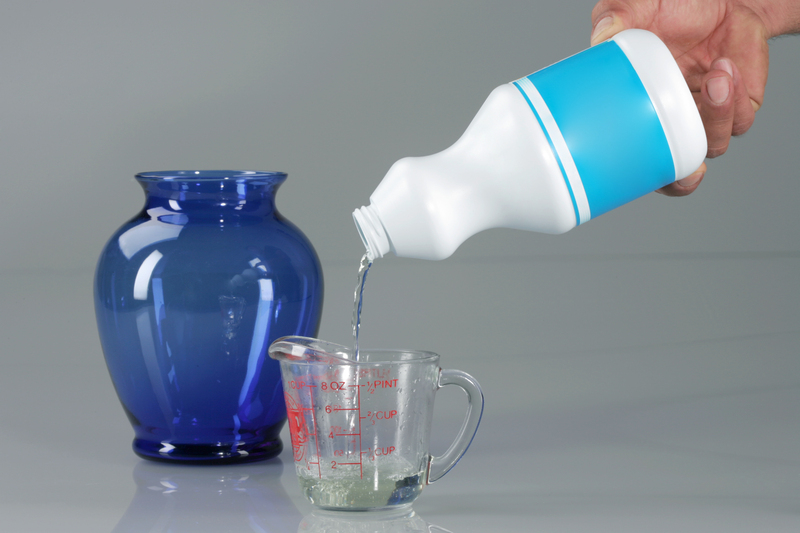Achieve a Gleaming Stovetop by Tackling Burnt-on Residue: The Ultimate Guide
Everyone loves a sparkling, clean kitchen--yet, burnt-on residue and greasy stains on your stovetop can be a frustrating eyesore. If you're tired of seeing unsightly spots when you cook, you've landed in the right place. In this comprehensive guide, you'll learn how to achieve a gleaming stovetop by effectively tackling even the toughest burnt-on messes. Follow along as we explore proven cleaning methods, the best cleaning products, and preventive tips so your stovetop shines like new every day.

Why Is a Clean Stovetop Important?
- Hygiene: Burnt-on residue can harbor bacteria and germs, making your cookware and food less safe.
- Appearance: A gleaming stovetop enhances the overall look of your kitchen.
- Functionality: Excess residue can affect burner performance and even become a fire hazard.
- Longevity: Regular cleaning prolongs the life of your stove and prevents costly repairs.
Now, let's dive into how to efficiently remove stubborn, burnt-on residue and maintain a shiny, attractive stovetop.
Understanding Burnt-on Residue: Why Does It Stick?
Before you tackle your stove cleaning routine, it's helpful to know why burnt-on residue accumulates. When spills or splatters from sauces, oils, and foods aren't cleaned up right away, the heat from burners bakes them onto the stovetop. Over time, these hardened deposits become increasingly difficult to remove.
- Lack of frequent cleaning allows residues to build up.
- High heat causes sugars and proteins to carbonize and bond with the stove surface.
- Ignoring small spills leads to layers of burnt-on grime.
Knowing the cause gives you an advantage--by addressing spills quickly, you minimize the chance for tough, burnt-on spots to form.
Essential Tools & Supplies for a Gleaming Stovetop
For an effective cleaning routine, gather the right tools and cleaning agents. Here's what you'll need:
- Soft microfiber cloths or non-abrasive sponges
- Baking soda--a natural, gentle abrasive for scrubbing
- White vinegar--cuts grease and helps dissolve mineral deposits
- Commercial stovetop cleaners for tough stains (look for products safe for your stovetop type)
- Razor blade scraper (for glass stovetops only, with careful technique)
- Old toothbrush or small brush for tight corners
- Gloves to protect your hands
Step-by-Step: How to Clean Burnt-on Residue on Stovetops
Step 1: Safety First
- Turn off burners and ensure the stovetop is cool before cleaning.
- Unplug electric stovetops if possible to avoid accidents.
- Wear gloves to protect your skin from harsh cleaners and sharp parts.
Step 2: Remove Grates and Burner Covers
- Take off grates (for gas stoves) and burner covers.
- Soak them in hot, soapy water while you clean the main surface. This softens grease and debris for easy residue removal.
Step 3: Wipe Away Loose Debris
- Use a dry paper towel or soft brush to sweep away crumbs and loose food particles.
- Avoid spreading debris during the wet cleaning steps.
Step 4: Apply a Cleaning Solution
- For routine messes, mix equal parts vinegar and water in a spray bottle. Spray generously over the stained areas.
- For heavy burnt-on residue, make a thick paste using baking soda and water. Spread this paste liberally over stubborn spots.
Step 5: Let It Sit
- Allow the cleaner or paste to sit for 10-20 minutes. This breaks down sticky or carbonized spots, making residue removal easier.
- Place a damp cloth over tough stains to keep the area moist for a deeper clean.
Step 6: Scrub Gently
- Use a microfiber cloth, non-abrasive sponge, or soft brush in gentle, circular motions.
- For burnt-on food on a glass-ceramic stovetop, use a designated razor blade scraper at a 45-degree angle--never dig or gouge, as this could scratch the glass.
- Re-apply cleaning solution as needed.
Step 7: Wipe Clean
- Wipe away loosened residue with a clean damp cloth.
- Rinse the surface thoroughly to remove any remaining cleaner or grime.
Step 8: Polish for a Gleaming Finish
- Optional: Finish by buffing the dry surface with a paper towel or soft, dry cloth until it gleams.
Step 9: Clean Grates and Burner Caps
- Use soapy water and a scrubbing brush to clean grates and burner covers.
- For super-stubborn residue, use a baking soda paste and let it sit for 15-30 minutes before scrubbing.
- Allow all parts to dry fully before reassembling your stovetop.
Special Tips for Specific Stovetop Types
Glass and Ceramic Stovetops
- Use only approved glass stove cleaners and soft materials.
- Avoid abrasive pads or metal tools that may scratch the surface.
- Utilize a razor scraper gently for burnt-on residue, always keeping the blade flat against the surface.
Gas Stovetops
- Pay attention to removing crumbs and residues from burner ports--use a paperclip or pin if needed.
- Let grates and caps soak longer for extra thick burnt-on food.
Electric Coil Stoves
- Remove the coils before cleaning drip pans.
- Never immerse the electrical elements themselves in water--wipe them clean instead.
Best Commercial Products for Tackling Burnt-on Residue
If you prefer ready-made solutions, many excellent stovetop cleaners can enhance your results. Look for:
- Cerama Bryte Stovetop Cleaner (for glass and ceramic tops)
- Bar Keepers Friend (for stainless steel)
- Easy-Off Kitchen Degreaser (for heavy grease)
- Zep Heavy-Duty Cleaner (multi-purpose for numerous surfaces)
Always check that the product is compatible with your specific stove material, and follow instructions carefully.
Natural Remedies for Burnt-on Stovetop Residue
- Lemon juice: Dissolves light burnt-on stains and deodorizes.
- Vinegar and baking soda: An unbeatable duo for tackling tough, caked-on messes.
- Salt paste: Good for heavy-duty scrubbing on metal grates.
- Hydrogen peroxide and baking soda: For deep-cleaning and stain fighting on white surfaces.
Common Cleaning Mistakes to Avoid
- Using steel wool or harsh abrasives, which can scratch and dull your stovetop.
- Leaving acidic cleaners or vinegar on for too long, which may cause discoloration or damage.
- Forgetting to clean burner caps and drip trays regularly, resulting in hidden burnt-on residue.
- Mixing chemicals (like bleach and ammonia), which creates dangerous fumes.
Preventing Future Burnt-on Residue: Proactive Tips
- Wipe spills immediately: Address splatters and spills right after cooking, before they have a chance to burn and set.
- Use splatter guards: Minimize food spills with lids or splatter guards.
- Schedule regular cleaning: Give your stovetop a quick wipe-down daily and a more thorough cleaning weekly.
- Avoid boiling over: Use larger pots or keep a close watch to prevent boil-overs that cause sticky messes.
- Use appropriate cookware: Flat-bottomed pots and pans help reduce uneven heating and scorching.
Dealing with Persistent or Old Burnt-on Residue
Old burnt-on residue sometimes seems impossible to shift. Here's how to deal with it:
- Repeat cleaning cycles: Persistence pays off--several rounds of baking soda paste and gentle scrubbing may be needed.
- Try steam: Place a wet, hot cloth over the area and let sit for 15-20 minutes to loosen the debris.
- Enzyme cleaners: Some enzyme-based kitchen cleaners are effective for breaking down organic residues.
- Contact a professional: For extreme buildup or delicate high-end stoves, a professional cleaning service may be worth considering.
Expert Advice for Continued Stovetop Brilliance
Consistency is key to maintaining a brilliant, residue-free stovetop. Set a reminder for your weekly deep clean, and follow these additional tips from cleaning pros:
- Dedicate specific cloths and sponges just for your stovetop to prevent cross-contamination.
- Clean as you cook: If you notice spills while your meal simmers, carefully wipe them away if safe to do so.
- Check for hidden buildup: Lift burners, drip trays, and knobs occasionally to check for grime.
- Polish with olive oil (on stainless steel): After cleaning, a touch of olive oil buffed onto stainless surfaces will leave a beautiful gleam and make future cleaning easier.

FAQs: Gleaming Stovetop by Tackling Burnt-on Residue
- How do I get rid of burnt-on residue without scratching?
Always use non-abrasive cleaners and tools. For glass and ceramic tops, a razor scraper held at a shallow angle can lift residue safely. - Can I use ammonia or bleach on my stovetop?
Avoid harsh chemicals, as they can ruin stove finishes or create dangerous fumes. Stick to vinegar, baking soda, or stove-safe commercial cleaners. - How often should I deep clean my stovetop?
A weekly deep cleaning in addition to daily wipe-downs is ideal for most households. - What's the best cleaner for stubborn stains?
A baking soda paste or professional stovetop cleaner will tackle most tough stains without causing damage.
Conclusion: Enjoy a Gleaming Stove Every Day!
Achieving a gleaming stovetop by tackling burnt-on residue is possible--with the right knowledge, products, and a little elbow grease. Embrace these proven methods and tips, and your kitchen will sparkle with minimal effort. Don't let burnt-on stains dampen your culinary enthusiasm; treat your stovetop with regular care and enjoy a pristine, inviting center for every meal you cook.
Ready to transform your kitchen? Start today with a thorough stovetop clean, and enjoy the brilliance every time you step up to cook! For more expert tips on home care and cleaning, bookmark our site and share this guide with fellow home chefs.


